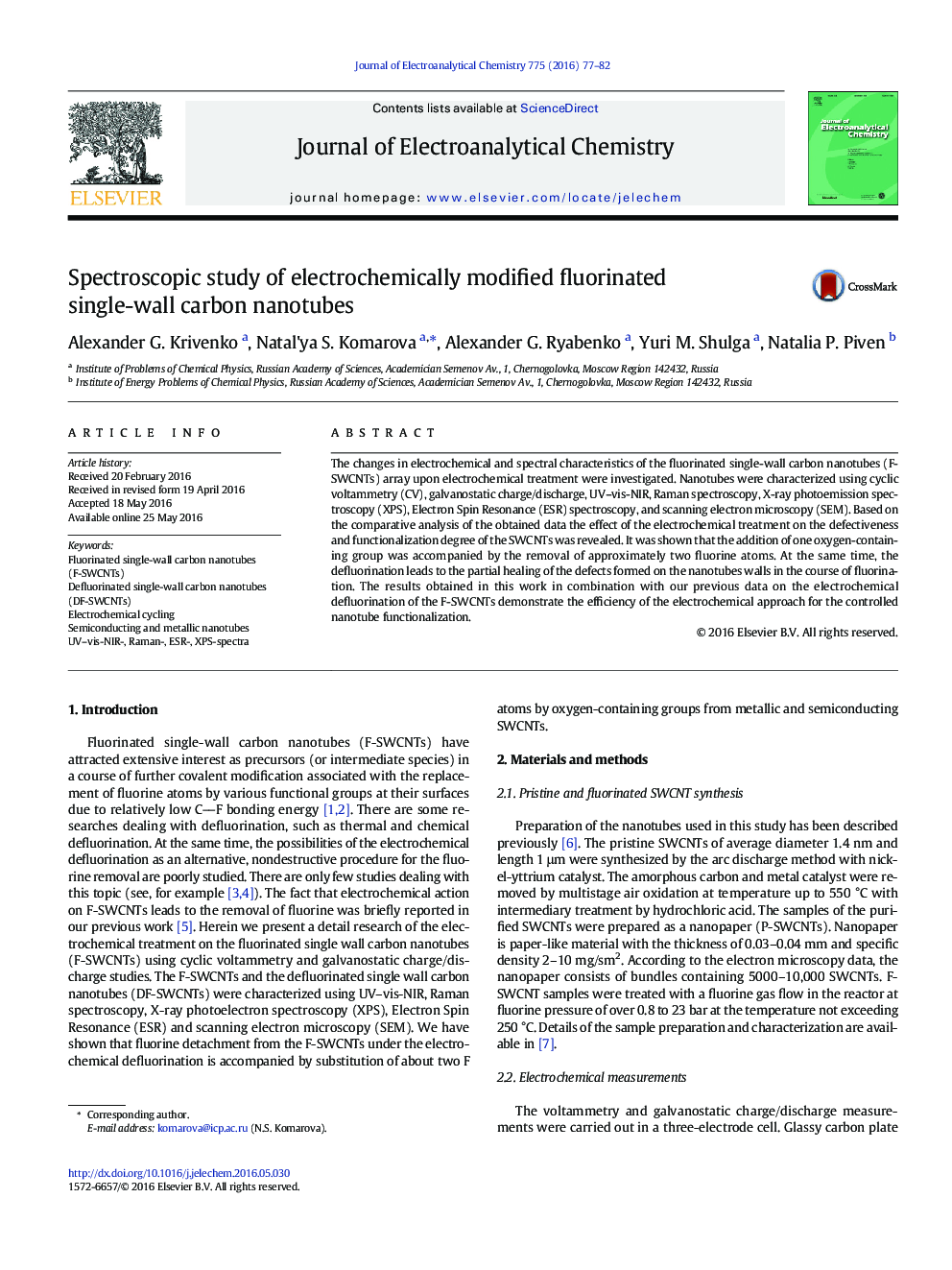| Article ID | Journal | Published Year | Pages | File Type |
|---|---|---|---|---|
| 217829 | Journal of Electroanalytical Chemistry | 2016 | 6 Pages |
•Electrochemical defluorination is achieved by multiple cycling of F-SWCNTs electrode.•The nanotube spectral parameters partly regain after electrochemical defluorination.•Metallic F-SWCNTs and DF-SWCNTs defectiveness is higher than for semiconducting ones.•At the defluorination part of F atoms have substituted by oxygen-containing groups.•One oxygen-containing group is accompanied by the removal of two fluorine atoms.
The changes in electrochemical and spectral characteristics of the fluorinated single-wall carbon nanotubes (F-SWCNTs) array upon electrochemical treatment were investigated. Nanotubes were characterized using cyclic voltammetry (CV), galvanostatic charge/discharge, UV–vis-NIR, Raman spectroscopy, X-ray photoemission spectroscopy (XPS), Electron Spin Resonance (ESR) spectroscopy, and scanning electron microscopy (SEM). Based on the comparative analysis of the obtained data the effect of the electrochemical treatment on the defectiveness and functionalization degree of the SWCNTs was revealed. It was shown that the addition of one oxygen-containing group was accompanied by the removal of approximately two fluorine atoms. At the same time, the defluorination leads to the partial healing of the defects formed on the nanotubes walls in the course of fluorination. The results obtained in this work in combination with our previous data on the electrochemical defluorination of the F-SWCNTs demonstrate the efficiency of the electrochemical approach for the controlled nanotube functionalization.
Graphical abstractFigure optionsDownload full-size imageDownload as PowerPoint slide
